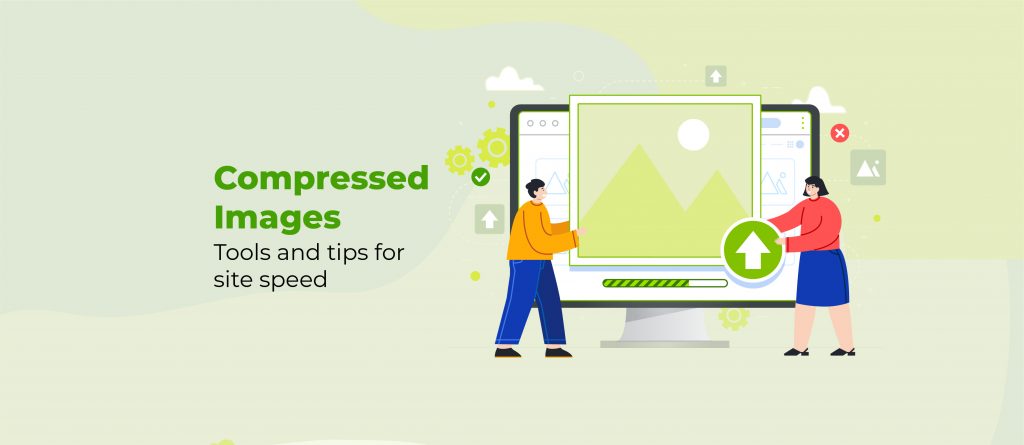You probably know that improving site speed is important for WordPress websites. But did you know that optimizing images can help your WordPress website run more smoothly? Image optimization is a piece of the puzzle in order to get your WordPress site running at its best. In this article, we’ll dive into image optimization and how it will make a huge difference in your WordPress website’s performance!
Can optimizing your WordPress site images can improve your search rankings?
Yes! Images that are optimized increases your WordPress site’s chances of being returned in Google Image Search. Also, images are more likely to get clicked when they show up in image search results.
NOTE: once you have compressed your images you still want to utilize caching measures to make sure you are getting optimal site speed and performance.
A quick and easy way to optimize your images is to use a plugin.
Plugins you can use to optimize your site’s images:
WP Smush It
WP Smush It is a WordPress plugin to help you optimize and compress your images for free right from within your word press dashboard.
Imagify
Imagify helps you automatically resize all of the large photos on your WordPress website in an instant. You’ll be able to show off those beautiful high-resolution images that look great on retina screens without slowing down or breaking your site! Their image compression algorithms are top-notch and their servers were built specifically for speed by utilizing Nginx, Varnish Cache & Apache Traffic Server.
Lazy Load
You can use a WordPress plugin called Lazy Load to defer image rendering until the user scrolls past them. This allows your word press site to load faster but requires an extra step in order for it to work properly. Be sure that when you are using this WordPress image optimization plugin is that there aren’t any JavaScript conflicts or other issues with your theme’s design or javascript files. You’ll need to find a way to disable all of those scripts and then re-enable them after lazyload has been activated on each page!
WP Smush Pro
If you’re looking to take things up a notch, then WP Smush pro might be just the WordPress image optimization tool you’ve been looking for! If this sounds like something that would work well with your site, click on the link above to check it out! This word press plugin can really go beyond compression by using lossless compression techniques such as Jpegtran. You’ll also see some great post-processing optimizations done automatically without any extra effort from you whatsoever!
Imsanity
If you want an image compression WordPress plugin that is fast, easy, and doesn’t require any downloads or installations whatsoever then Imsanity might be the word press image optimizer for you! Be sure to check it out if this sounds like something that will work well with your site. This WordPress photo optimization tool works great when combined with other plugins such as WP Smush It Imagify Lazy Load or
Other Image Optimization Resources:
If you don’t want to use a plugin, here are some other methods you can look into:
JPEGmini
JPEGmini is an online WordPress image compression tool that uses its own proprietary technology which automatically reduces the size of your photos so they can load much more quickly on your website while still maintaining their original look & feel. It’s completely free word press photo optimization software but does require Java in order to run.
Tiny Png Image Optimizer
Tiny Png Image Optimizer is another free word press optimized image plugin that will automatically compress JPEGs PNGs GIFs and SVG images as well as optimize their metadata. It’s a WordPress image optimizer plugin that is designed for word press and will help you compress your JPEGs PNGs GIF and SVG files.
Manually optimizing your images before upload
If you want to take a manual approach, here are some ideal optimization settings you can apply to your image before you upload them to your WordPress website:
- Ideal file size:
- A file size below 70 kb is what you should be targeting. In case of heavy files closer to 300 kb, the best you can achieve is a 100 kb file size
- Services like Pixlr, Canva, and Image Resizer can help you with basic editing and resizing needs.
- Ideal file format:
- Photographs should utilize a JPG file format while logos and basic representations should utilize PNG or SVG formats.
- JPG and PNGs can likewise have a similar quality and more modest document size with the lesser-known organization, WebP.
- JPEG 2000 and WebP have preferable web pressure over PNG or JPEG. Changing from JPEG and PNG to WebP can assist with saving worker space in light of the fact that the picture pressure keeps the sharpness of the first picture AND decrease document size by practically 35% in contrast with JPEG and 50 % to PNG.
- Other tips:
- Use a white background for your images instead of a transparent PNG.
We hope we were able to give you some tips on optimizing your website’s images, but you must remember optimizing your images is just one piece of the puzzle to help improve your WordPress site’s overall performance and boost search engine rankings!
If you have any tips or tricks on how you optimize your images drop them in the comments section below!

